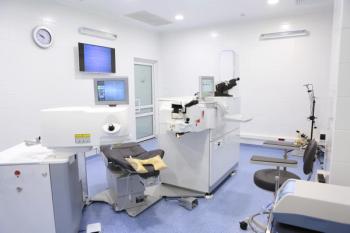
A bipartisan bill introduced in Congress in January could help improve patient care while saving doctors time by allowing for electronic prior authorizations of Medicare Part D prescriptions.

A bipartisan bill introduced in Congress in January could help improve patient care while saving doctors time by allowing for electronic prior authorizations of Medicare Part D prescriptions.

Physicians constrained when payers put cost above care

Prior authorizations have always been a source of frustration for physicians, but a new industry effort that includes medical groups and insurers has been established to try to streamline the process.

One of the missions of health insurance providers is to ensure patients have access to effective, quality, evidence-based care. Clinical practice guidelines support the practice of evidence-based medicine, and are typically derived from recognized scientific sources such as specialty societies and are updated annually.

ChangeMaker Ira Rubin, MD, and his son, Zachary, discuss the value of reaching out to young people interested in medicine to make today’s students tomorrow’s physicians.

"It's an occupational hazard now. I've been diagnosed with 'Prior Authorization Elbow.'"

In between the headache that is healthcare for physicians these days, Medical Economics has tried to insert some laughter into the crazy and hectic lives of our readers through our Funny Bone Comics. Click through to see which cartoons you got the most joy and laughs from this past year.

An inside look at what drives insurers to refuse to negotiate, require more prior auths and deny claims

Despite recent moves to streamline the prior authorization process, physicians still struggle mightily as they jump through payers’ hoops.

Physicians should focus on generating revenue, not putting in a longer workday, experts say

To take on a lease or take out a loan? For many small business owners, that really is the question. Especially for those in the medical field, it’s a tough choice between leasing expensive new equipment or financing it with a loan.

How approval hassles for ordering tests or prescribing drugs can get in the way of caring for patients.

Today, we stand in solidarity against the causes of physician suicide. We must shine a light on the causes and either force them to change or make them irrelevant.

Doctors and hospitals in the U.S. spend nearly $200 billion per year on medical devices, according to a 2015 study by the Advanced Medical Technology Association.

Quality metrics, MOC and physician income are the hot topics readers are talking about in this issue of Your Voice.

MACRA/MIPS should be abandoned for the good of Medicare patients.


Electronic health record systems were not designed for population health, but help is on the way.

Within many physicians practices, there is a relatively untapped resource for optimizing revenue-business operations data. There has never been a better time to dive into this type of data-it can show both areas of strength and opportunities for improvement.

Don’t wait until April 15 to focus on tax planning for yourself and your practice. Here’s how to get off to a positive start on the 2016 tax season.

Electronic health record pop-up notices, intended to help physicians by providing timely reminders and alerts, could end up actually compromising patient care. Customizing the system and integrating it into the practice workflow is one of the best strategies for appropriately and efficiently using alerts-and avoiding potential alert fatigue.

The challenge for many practices is to provide PCMH without adequate funding as we wait for value-based programs to become more prevalent.

Small practices often have the weakest security, experts say, leaving physician vulnerable to considerable threats.

Read about the ten challenges Medical Economics believes will be important to physicians in the upcoming year.

Coding and billing advice from the experts.